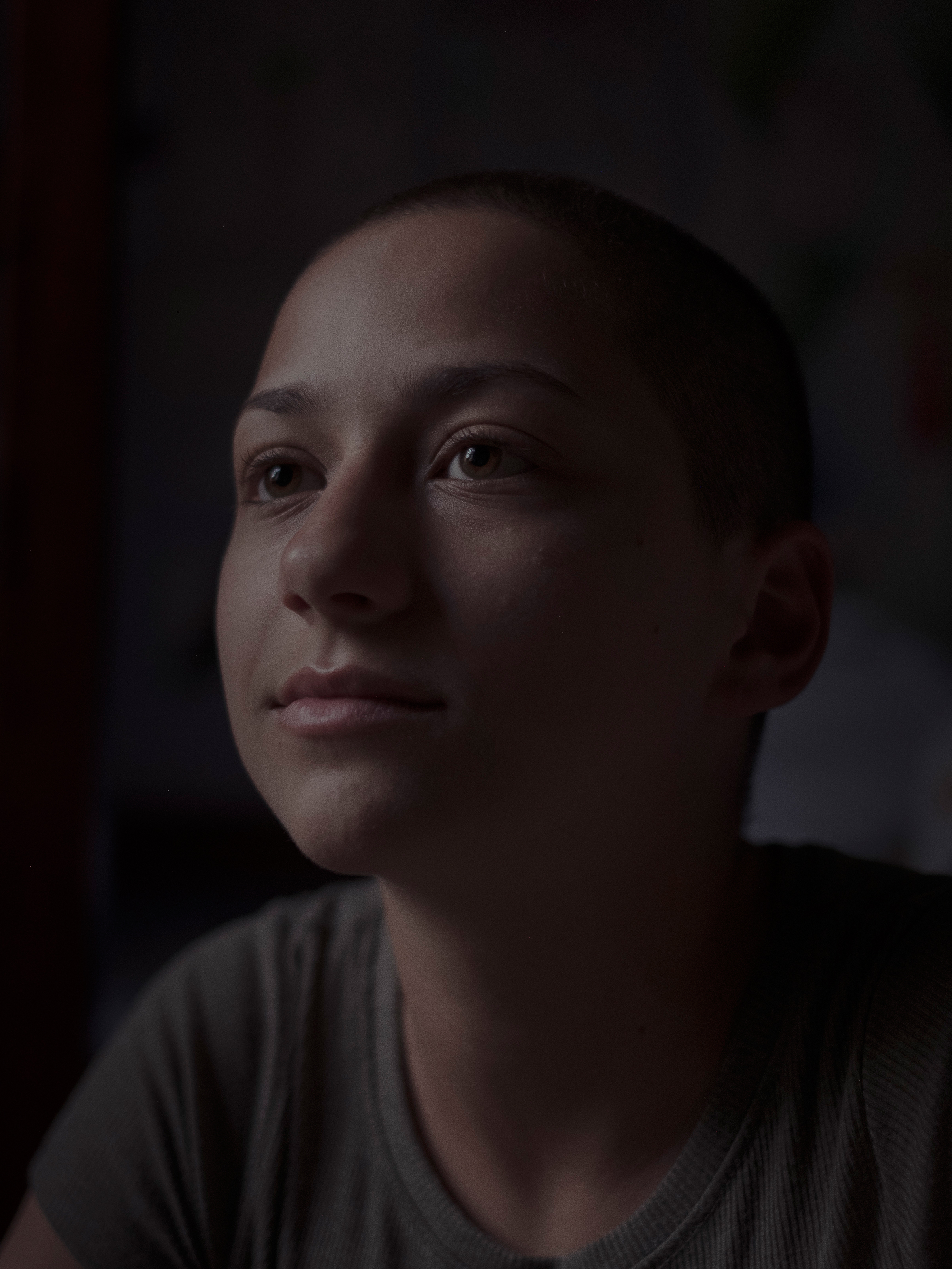It’s lunchtime on a Tuesday, and the kids are piling into a pizzeria booth in Coral Springs, Fla., to plot a revolution. “The adults know that we’re cleaning up their mess,” says Cameron Kasky, an 11th-grader at Marjory Stoneman Douglas High School, who started the #NeverAgain movement to curb gun violence three weeks earlier in his living room. “It’s like they’re saying, ‘I’m sorry I made this mess,’” adds buzzcut senior Emma González, “while continuing to spill soda on the floor.”
Kasky and González are sitting with two more of the movement’s leaders, Alex Wind and Jaclyn Corin. Except they’re not sitting, exactly. They’re crouching diagonally on the seat and leaning back on one another’s knees in order to devour their calzones while maintaining as much physical contact as possible. Corin throws a crouton into González’s mouth. Kasky uses Corin’s knees as a pillow. The conversation turns from their fellow organizer David Hogg (“So laser-focused,” González says, that “he could make his body get pregnant if he wanted to”) to the conspiracy theory that they’re actors being paid by shadowy donors (prompting Kasky to ask why his credit card was recently declined at McDonald’s) to their prolific trolling of the NRA. They agree that the gun lobby’s spokeswoman, Dana Loesch, is “very hot but kind of scary,” as González puts it.

The pizza joint is a few hundred yards away from the school where 17 of their peers and teachers were murdered a month ago. At 2:21 p.m. on Valentine’s Day, according to authorities, 19-year-old Nikolas Cruz, a former student, entered the freshman building armed with an AR-15 and opened fire into four classrooms on the first floor. Corin had just delivered carnations to the building to raise funds for junior prom; she had handed one flower to a girl who was shot minutes later. After the fire alarm went off during his AP environmental science class, Hogg took a video of students crouching inside a tiny classroom to hide from the shooter. The video went viral, landing him a recurring spot on the cable-TV circuit. The next day, Kasky invited Wind and Corin over to his house to plan a march for gun reform. Together, they started the #NeverAgain hashtag on Twitter.
Most of these kids cannot vote, order a beer, make a hotel reservation or afford a pizza without pooling some of their allowance. On the surface, they’re not so different from previous generations of idealistic teenagers who set out to change the world, only to find it is not so easy. Yet over the past month, these students have become the central organizers of what may turn out to be the most powerful grassroots gun-reform movement in nearly two decades. For much of the rest of the country, numbed and depressed by repeated mass shootings, the question has become, Can these kids actually do it?
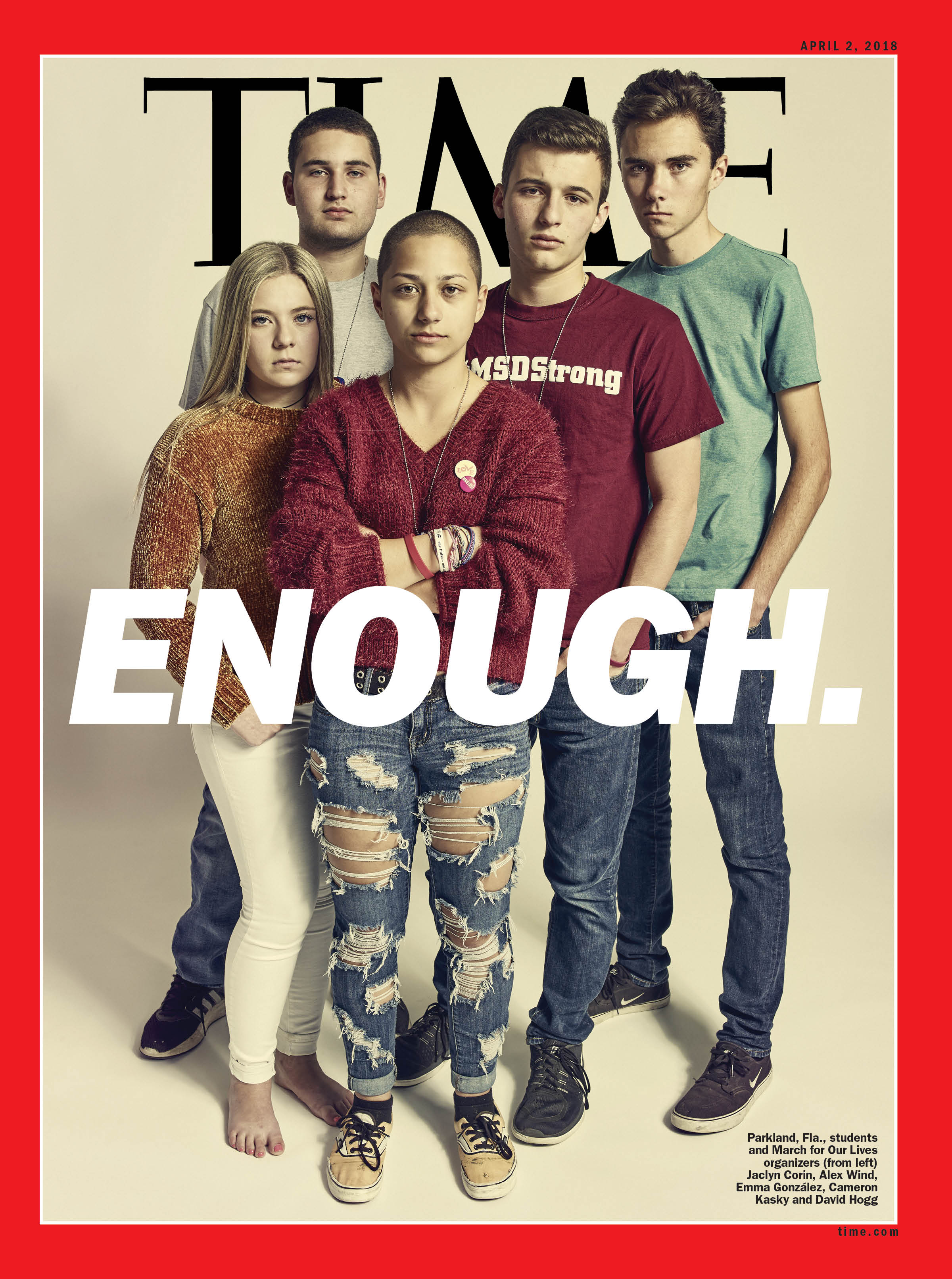
No one thinks it will be easy. Gun violence in America is one of those problems that can feel truly hopeless. The U.S. has only 4.4% of the world’s population, yet it accounts for roughly 42% of the world’s guns, according to the comprehensive 2007 Small Arms Survey. And roughly 31% of the world’s mass shooters are American, according to a University of Alabama study. Even as mass-shooting deaths mount, our Second Amendment has made gun rights a third-rail issue: roughly 90% of Americans agree on “common-sense” solutions like universal background checks, yet absolutists stand in the way of any meaningful action.
After Adam Lanza killed 20 first-graders and six staff members at a Connecticut elementary school in December 2012, politicians tried to tackle the issue. President Obama issued Executive Orders to strengthen the background-check system and study gun violence, and several states tightened gun restrictions. Yet Congress failed to pass a modest bipartisan bill to close loopholes for gun sales. In the five years since, a familiar pattern has emerged. Every month or so, a killer shoots innocent people at random. There is a brief period of mourning. Democrats offer feeble pleas for new gun limits; Republicans offer “thoughts and prayers.” No substantial laws are passed, and the nation moves on. This was the response when Omar Mateen killed 49 people at an Orlando nightclub in 2016; when Stephen Paddock massacred 58 people at a Las Vegas concert last October; when Devin Patrick Kelley killed 26 people in a Sutherland Springs, Texas, church in November.
But in the days after the Parkland shooting, something different happened. The Parkland kids, at once tearful and cutting, publicly called out the NRA’s influence on national politics, and shamed the leaders they considered responsible for the nation’s lax gun laws. (Privately, they have dubbed Florida Governor Rick Scott “Voldemort” and called Senator Marco Rubio some names that are unprintable.) Their voices quickly went viral. González had no Twitter account before the shooting—11 days later, she had more followers than the NRA. They called for specific changes like a renewed assault-weapons ban, universal background checks and digitized gun—ownership records.
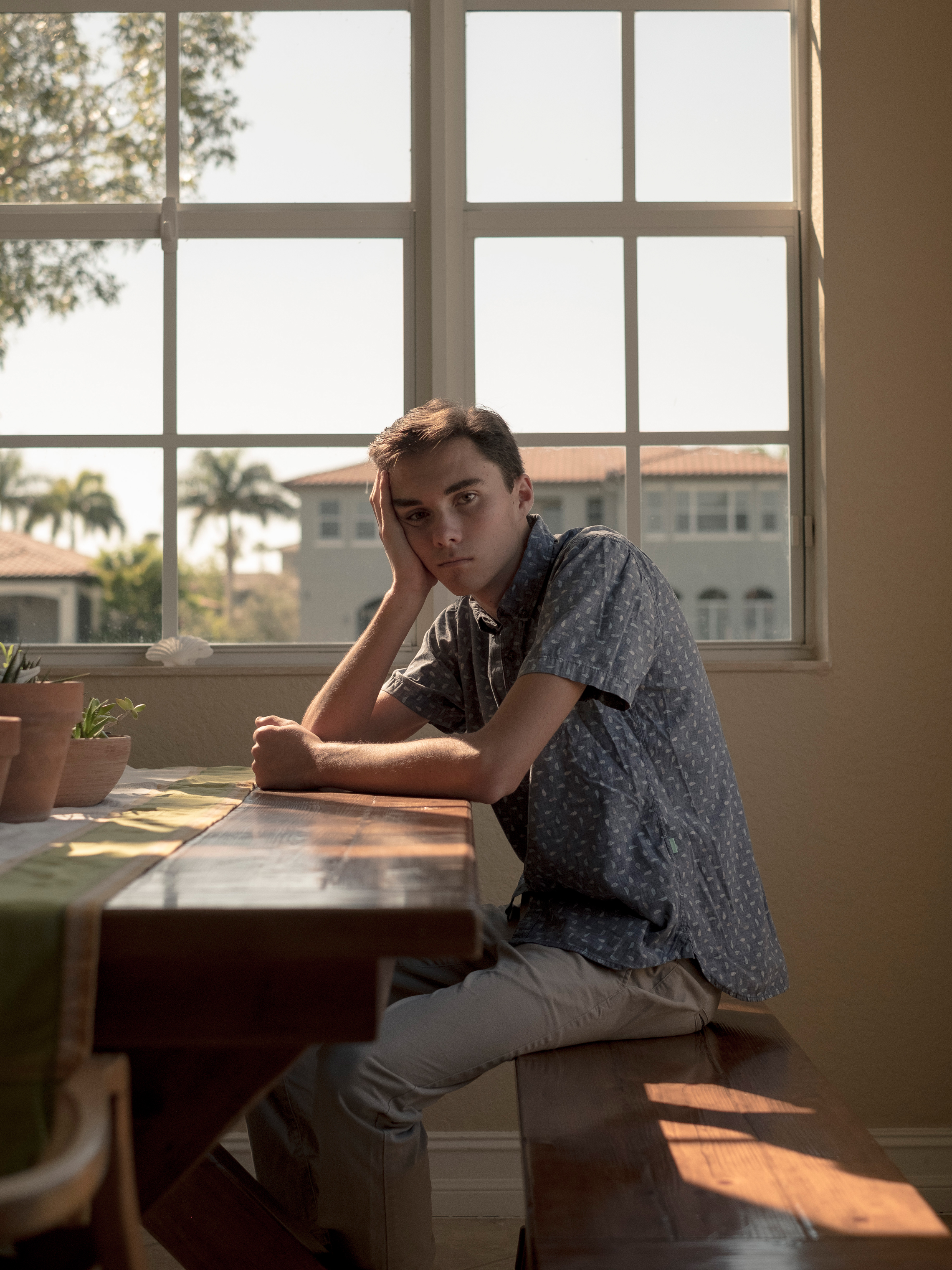
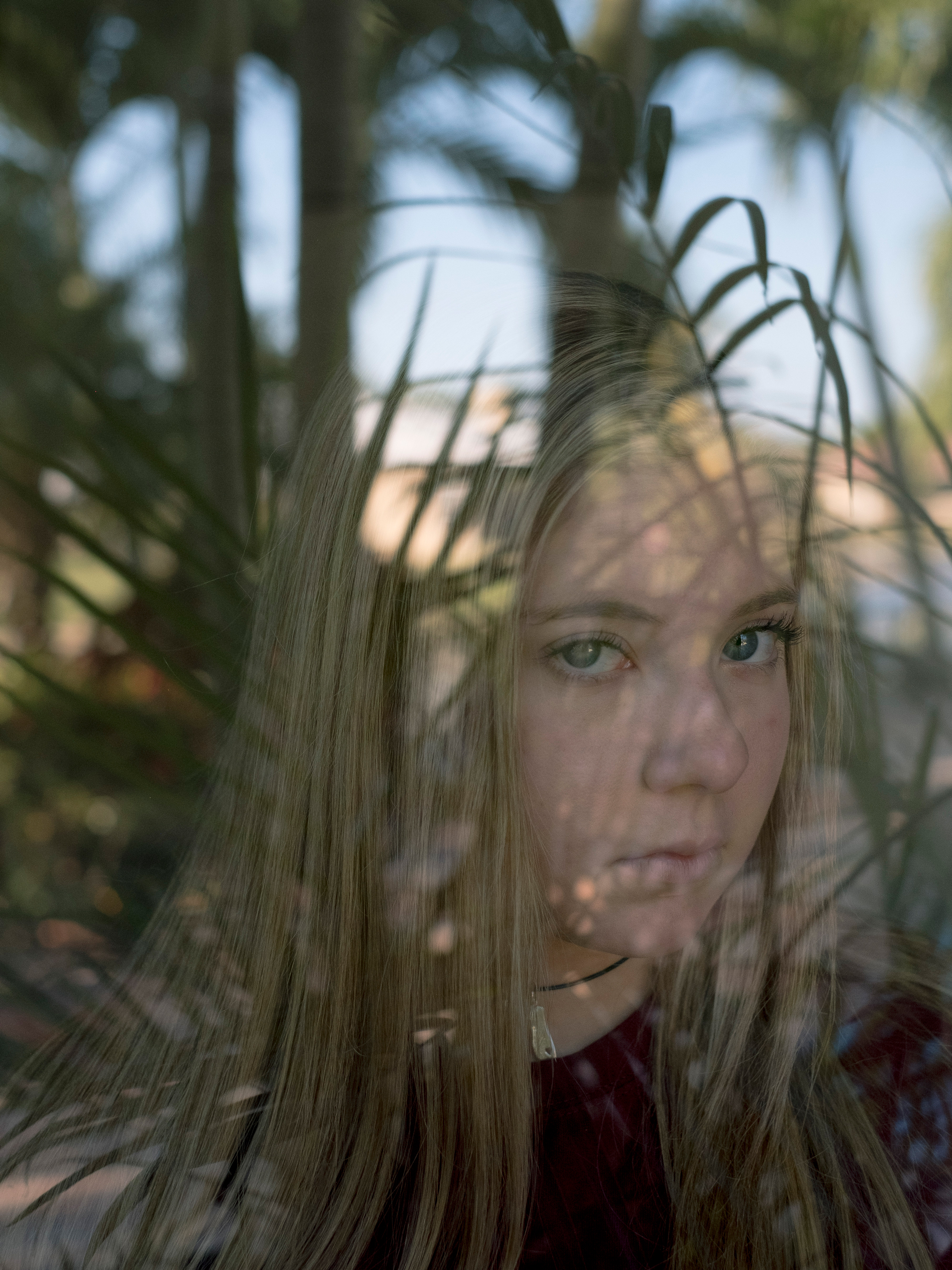
Perhaps most important, the Parkland kids painted the NRA and their allies as the mortal enemies of the roughly 50 million schoolkids growing up in what Kasky calls “the mass-shooting generation.” They took the mantle of “personal protection” from the gun lobby, while reframing the larger gun debate along generational lines.
And so news that was once met with sad resignation now drives teenagers to march in the streets. On March 14, nearly a million kids across the country left class for the National School Walkout to protest the school-shooting epidemic. Support for stronger gun regulations spiked to 68% after the shooting, up from 60% last November, according to a Politico/Morning Consult survey. Public support for the NRA is down to 37%, according to a WSJ/NBC poll, the first time since 2000 that the organization has been viewed more negatively than positively. Companies from Delta Airlines to Hertz to MetLife cut ties with the NRA. Dick’s Sporting Goods announced it would stop carrying assault weapons. Florida, known for its historically soft gun policies, passed a bill March 9 that bans bump stocks, imposes a waiting period, raises the minimum age to buy a weapon and allows cops to take guns from mentally disturbed people. Sixty-seven NRA-endorsed Republicans voted for the bill, and the gun-friendly GOP Governor Scott signed it.
How a movement catches fire is always a mystery, but the Parkland kids seem matched for this moment. They’re young enough to be victimized by a school shooting, but old enough to shape the aftermath. Like many teenagers, they’re at a peculiar stage in their lives where they feel at once vulnerable and invincible, highly social yet impervious to the etiquette expected from adults. Their bombastic style mirrors President Trump’s: they call their enemies names and hurl sick burns at politicians and lobbyists as if they’re shouting across the locker room.
None of which means they’ll actually succeed, and the kids are not entirely naive about their chances. They know the GOP-controlled Congress is unlikely to pass meaningful new gun laws. Although Trump briefly signaled support for strengthening background checks, he quickly abandoned that position. Nor do the Parkland kids speak for everyone, by a long shot: polls show that young people as a whole do not necessarily favor stricter gun laws than their parents. Which means the kids face the same question as the movements before them: If this government doesn’t respond to their demands, did their movement make a difference?
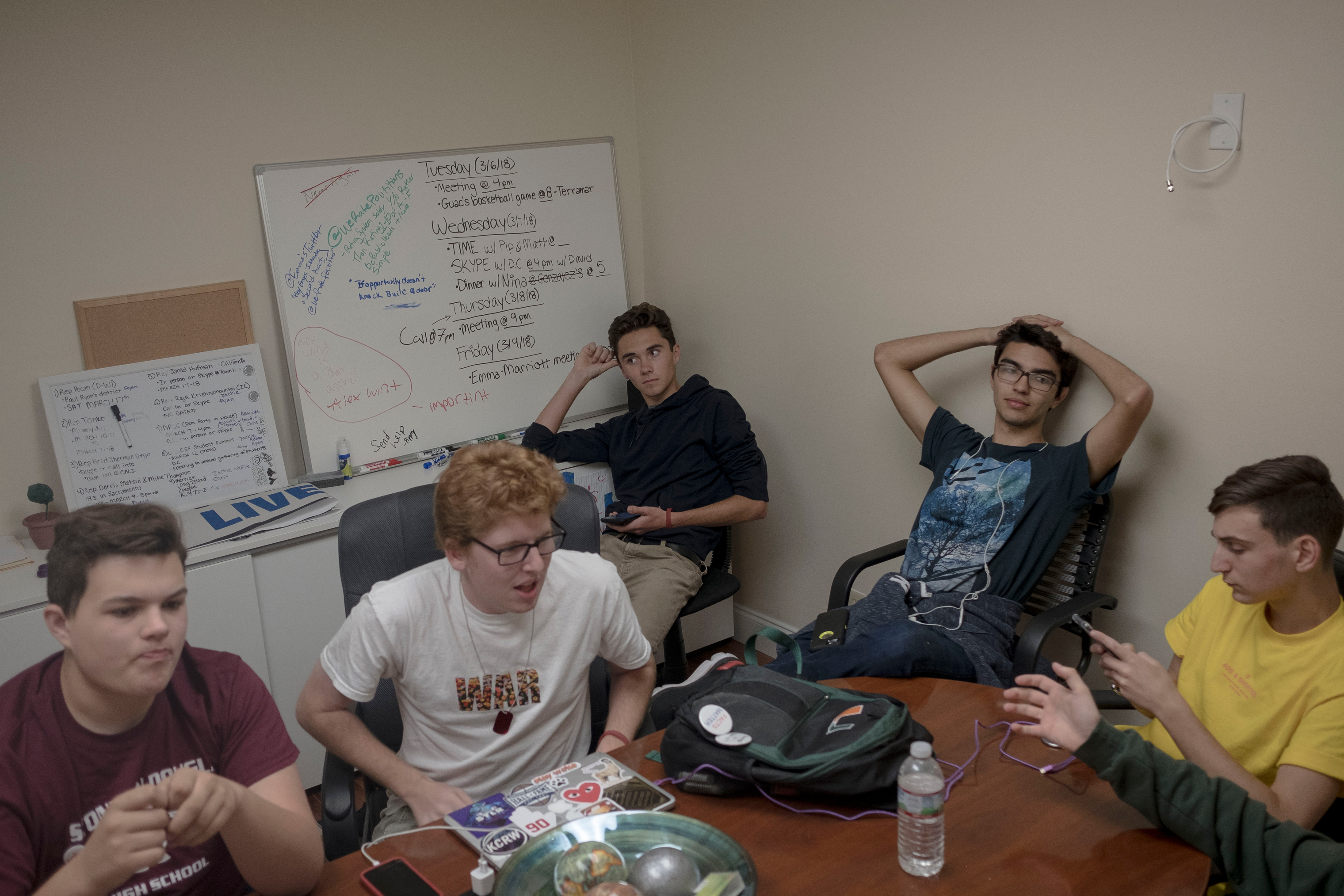
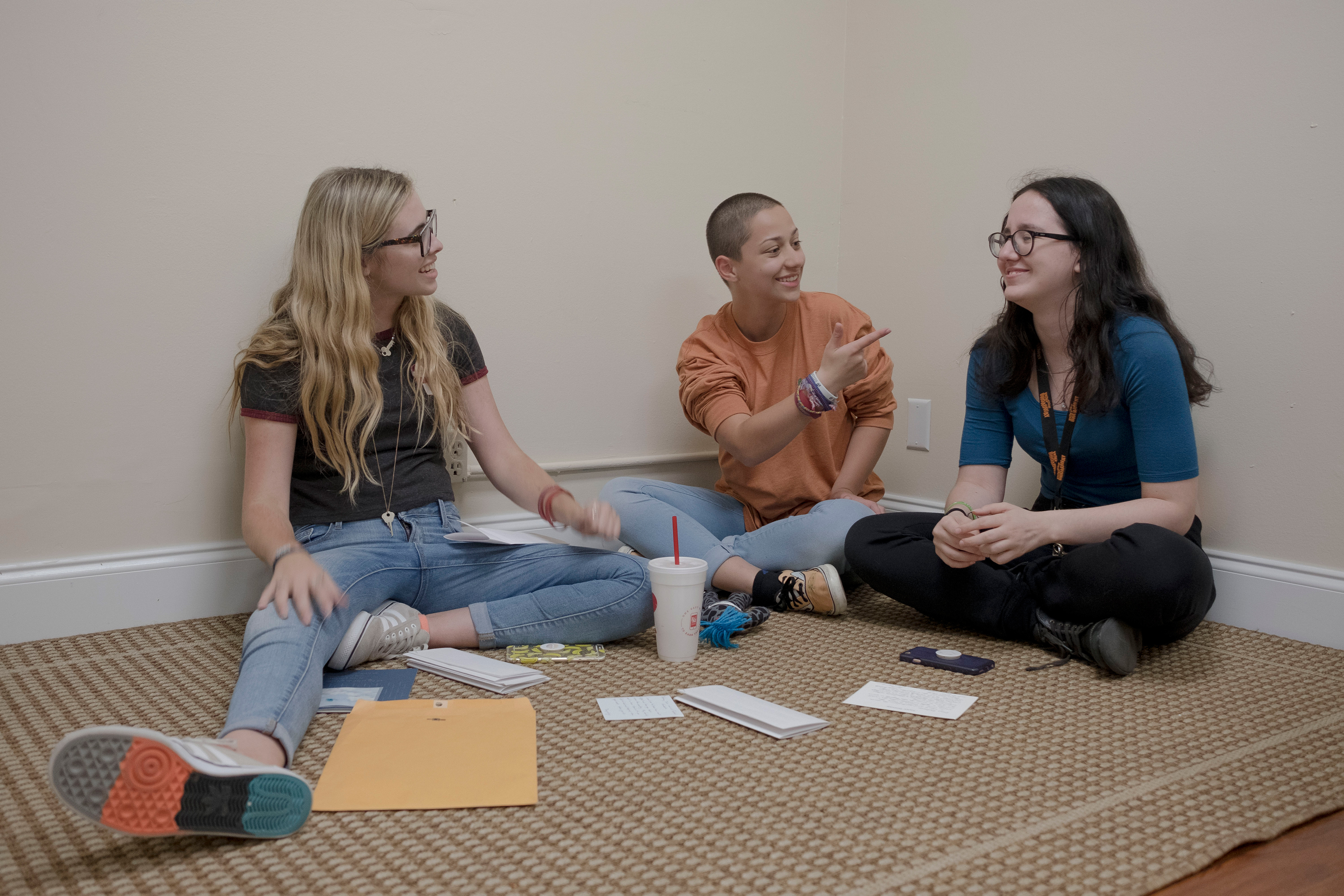
The first big test will come on March 24 with the student-led March for Our Lives, which already has registered more than 800 demonstrations in all 50 states and on six continents. (“Sorry, Antarctica, y’all are gonna get shot,” Kasky quips.) The organizers plan to allow only young speakers to address the Washington march, and only artists under 24 can submit official poster designs. The march is meant to expand voter registration among like-minded members of the school-shooting generation: the kids that grew up post-Columbine, who huddled behind barricades during active-shooter drills and learned to tape construction paper over classroom windows.
From there, the Parkland kids plan to make gun reform the central issue for young voters in the midterms. “We’re going to show these politicians that we’re coming for them,” says Hogg. Kasky is more ambitious. “The world failed us,” he says, “and we’re here to make a new one that’s going to be easier on the next generation. If you’re against that, then get out.”
The youth revolt is being planned in a donated office space in a strip mall, next to a mediocre deli in a small town near Parkland. To get inside the three windowless rooms where the #NeverAgain movement is headquartered, you have to knock three times on a locked glass door and then loudly identify yourself so the kids are sure you’re not an armed stalker. (They have received death threats.) Inside the lair, there are boxes of March for Our Lives T-shirts and a bust of Robert F. Kennedy next to whiteboards with schedules of conference calls. On one wall there’s a collage of mail that runs the gamut from encouraging to obscene. (An excerpt from one letter, sent to 17-year-old Parkland organizer Delaney Tarr: “Shut the f-ck up, you stupid f-cking c-nt.”) On another there’s a map of the U.S. where the teens have labeled the hundreds of sibling marches. A broom closet near the back bears a sheet of notebook paper that says Cameron Kasky’s office, directly across from a tiny bathroom labeled Cameron Kasky’s other office.
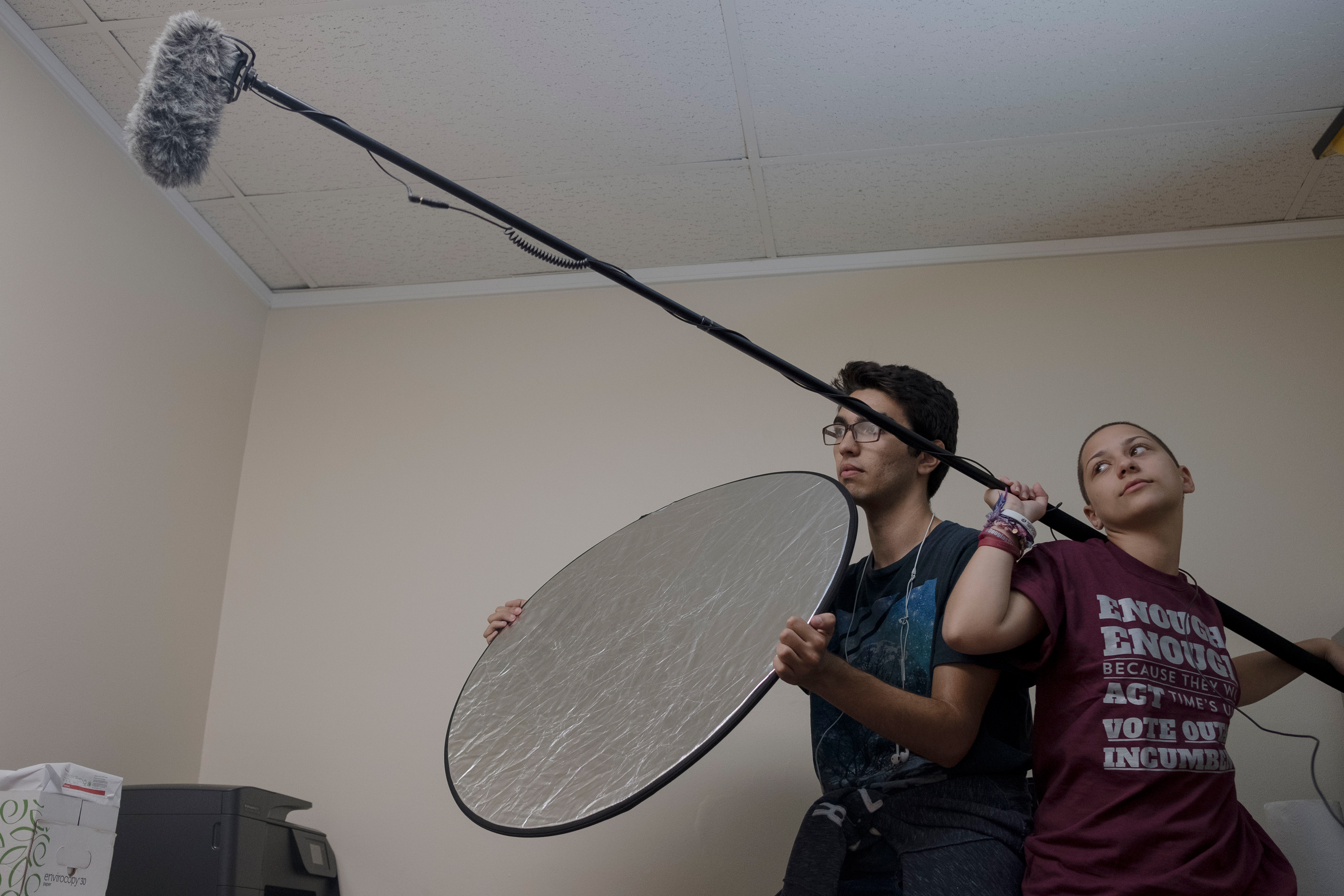
Everything crackles with a sense of ferocious optimism. It feels like the last rehearsal of a high school musical, halftime at state championships, the final days of senior year. The kids stream in and out on no particular schedule, tumble to the floor to read their fan mail, twirl around on chairs while composing tweets and crowd into a tiny conference room for calls with reporters or lawmakers. One day, they spent an afternoon making a video mocking NRA spokeswoman Loesch (they call her “the woman from the SuperBeets commercial” after digging up an old spot she did for a beet-juice product). Another day, they met with Representative Ted Deutch, a Florida Democrat who represents Parkland in Congress. There’s a sense that anything can happen in this little corner of the teenage universe, because all kinds of things can.
Gun politics have vexed adult organizers for decades, but so far the Parkland teens have had striking successes. Even though the kids are disappointed in the Florida bill (“It’s like they tried to take a big step forward and then tripped,” Hogg says), it’s still the first significant piece of gun legislation to come out of the Florida legislature in at least 20 years. The March 14 school walkouts, organized by Women’s March youth groups, surpassed the 750,000 protesters who flooded the Washington Mall for the Million Mom March in 2000 in what was then the largest gun-safety protest in U.S. history. “This youth movement is unprecedented,” says Kris Brown, co-president of the Brady Campaign to Prevent Gun Violence, which was formed by the organizations behind the 2000 march. “What’s different here is that the children who are impacted are older, and they are able to give voice in a way that could not happen before.”
The #NeverAgain organizers built a movement with the skills they learned in high school. Hogg, an aspiring journalist who studies TV production at Stoneman Douglas, has anointed himself the movement’s “press secretary.” Corin, the bubbly junior class president who did a 50-page term paper on gun control last year, organized roughly 100 students to travel to Tallahassee to lobby the state legislature. Kasky and Wind, both drama kids, have given some of the most emotional testimony about the shooting and their dead classmates. González gave a speech about the NRA’s influence that was informed by an AP government lesson on special-interest groups.
The kids are social-media natives who have used Twitter to stir up the same kind of fervor Trump does. If the President can mock his enemies, they reason, then why can’t high school students? “People always say, ‘Get off your phones,’ but social media is our weapon,” says Corin. “Without it, the movement wouldn’t have spread this fast.”
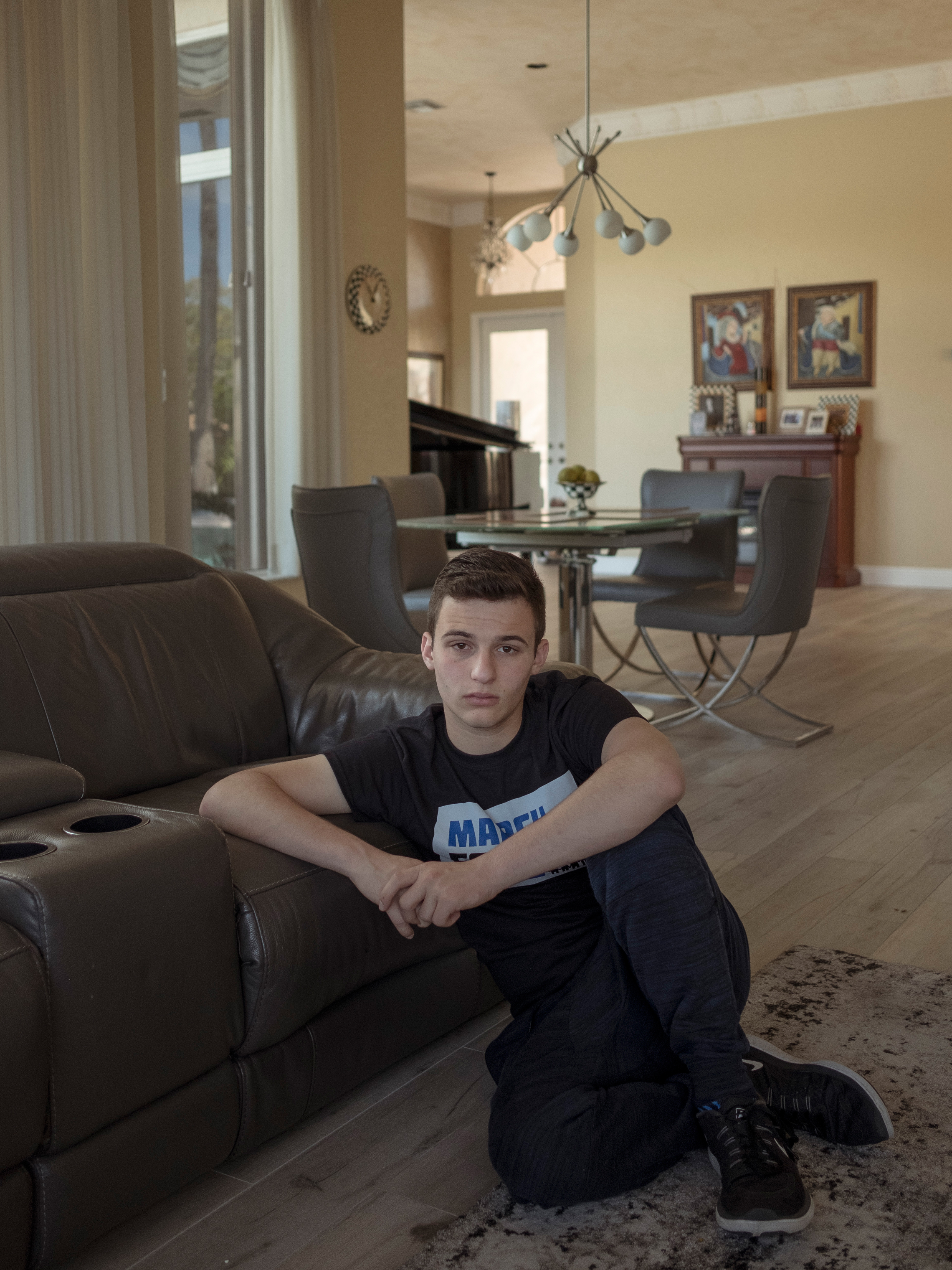
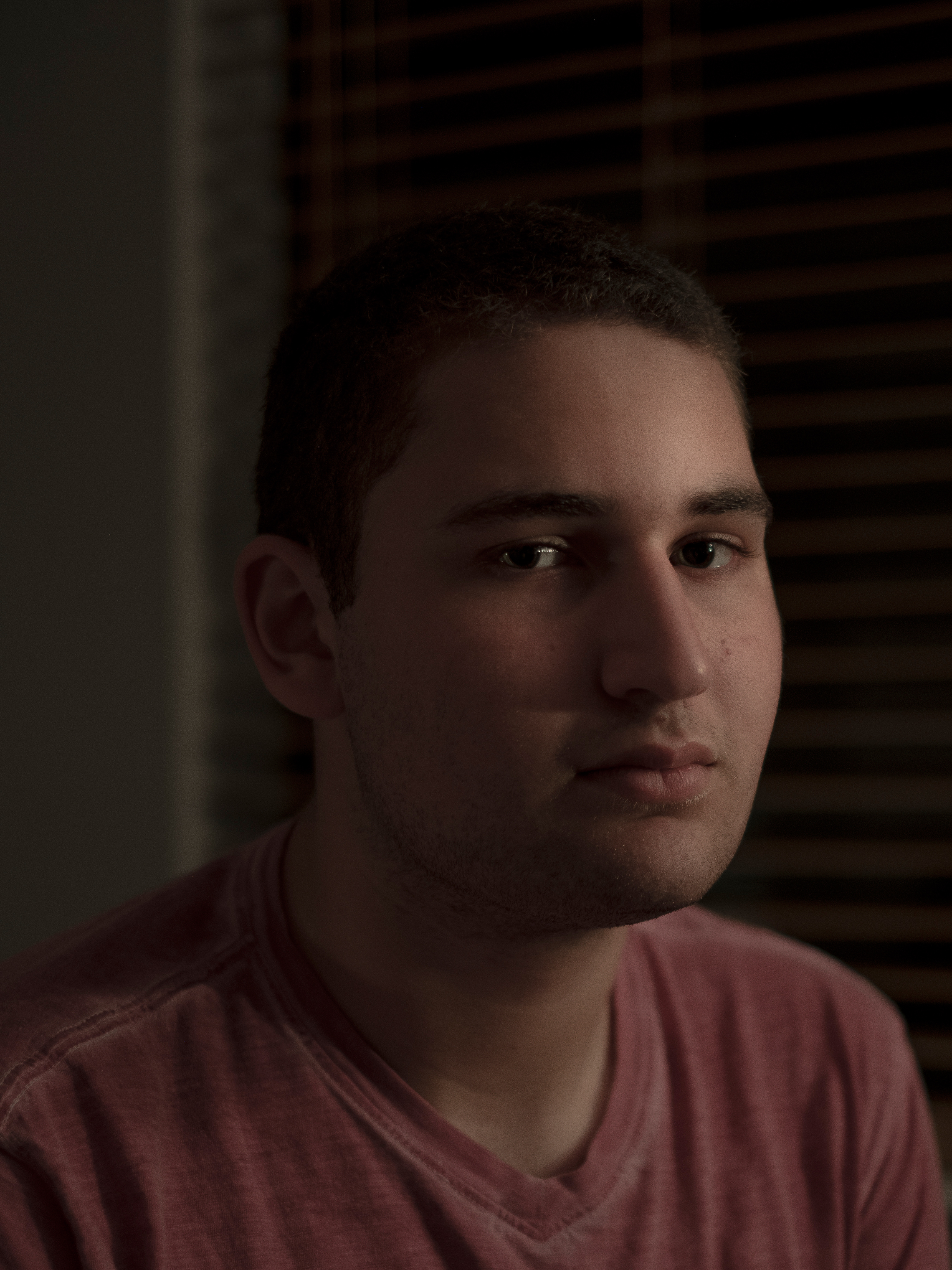
Teens have always had a unique talent for humiliation, and social media only sharpens their knives. If the Parkland kids were targeting their classmates instead of powerful lobbyists or Senators, their taunts could be mistaken for bullying. But going up against the NRA, they’re like mouthy Davids slinging stones at Goliath. “They’re using Twitter as a means to ridicule, to dismiss, to brush past the usual criticisms and just say, ‘These people are full of it,’” says Robert Spitzer, a professor of political science at SUNY Cortland who has written five books on gun policy. “The door for this has been opened by Donald Trump himself.”
As teenagers who survived a school shooting, they’re politically hard to hit: if the NRA or the GOP fight back, they are attacking young victims of a tragedy. One GOP candidate for the Maine house of representatives who called González a “skinhead lesbian” on Twitter faced so much online backlash that he dropped out of the race.
The students have had plenty of help. They’ve raised more than $4 million from small donors on the crowdfunding site GoFundMe, plus a couple million more from celebrities like George and Amal Clooney, Steven Spielberg and Oprah Winfrey. A top Hollywood PR firm is assisting with press requests pro bono, and Women’s March organizer Deena Katz is volunteering as a consultant on the march. The gun-reform advocacy group Everytown for Gun Safety, backed by billionaire former New York City mayor Michael Bloomberg, has given out more than $1 million in grants to local organizers planning sibling marches around the country, and the Brady Campaign to Prevent Gun Violence is sending busloads of kids to Washington, D.C. Democratic megadonor Tom Steyer pledged $1 million to gun-safety groups’ efforts to register more high school students to vote. “Our biggest problem is that we’re getting too much help,” says Corin.
They know that other youth campaigns against gun violence, including those led by black activists in urban communities, have not gotten the same financial support or media attention. “We came from an affluent area, and we’re mostly white, and we have to use that privilege,” says Tarr. The kids say they are trying to correct the imbalance. A letter from the Dream Defenders, a racial-justice group formed after the killing of Trayvon Martin, is hanging on the office wall. And in early March, the teens invited young activists from the Peace Warriors, a Chicago anti-violence group, to Parkland to discuss coordinating their efforts. “We’re fighting for the same thing,” says Arieyanna Williams, a high school senior from Chicago who has been working with the Peace Warriors since sophomore year. “We found our voice in Parkland. We didn’t really have it here.”
Inside the office, there is no adult supervision beyond Matt Deitsch and Kaylyn Pipitone, two 20-year-old college students and recent Stoneman Douglas alums who help with things that only adults can do, like signing contracts and insurance forms and paperwork for their 501(c)(4). “We want the grownups we need in this, and nothing more,” says Kasky. “We only have people doing the things that as 17-year-olds we cannot.” At an early #NeverAgain meeting, parents asked how they could help, recalls Alex Wind’s mother.
The answer came back: “Order pizza.”

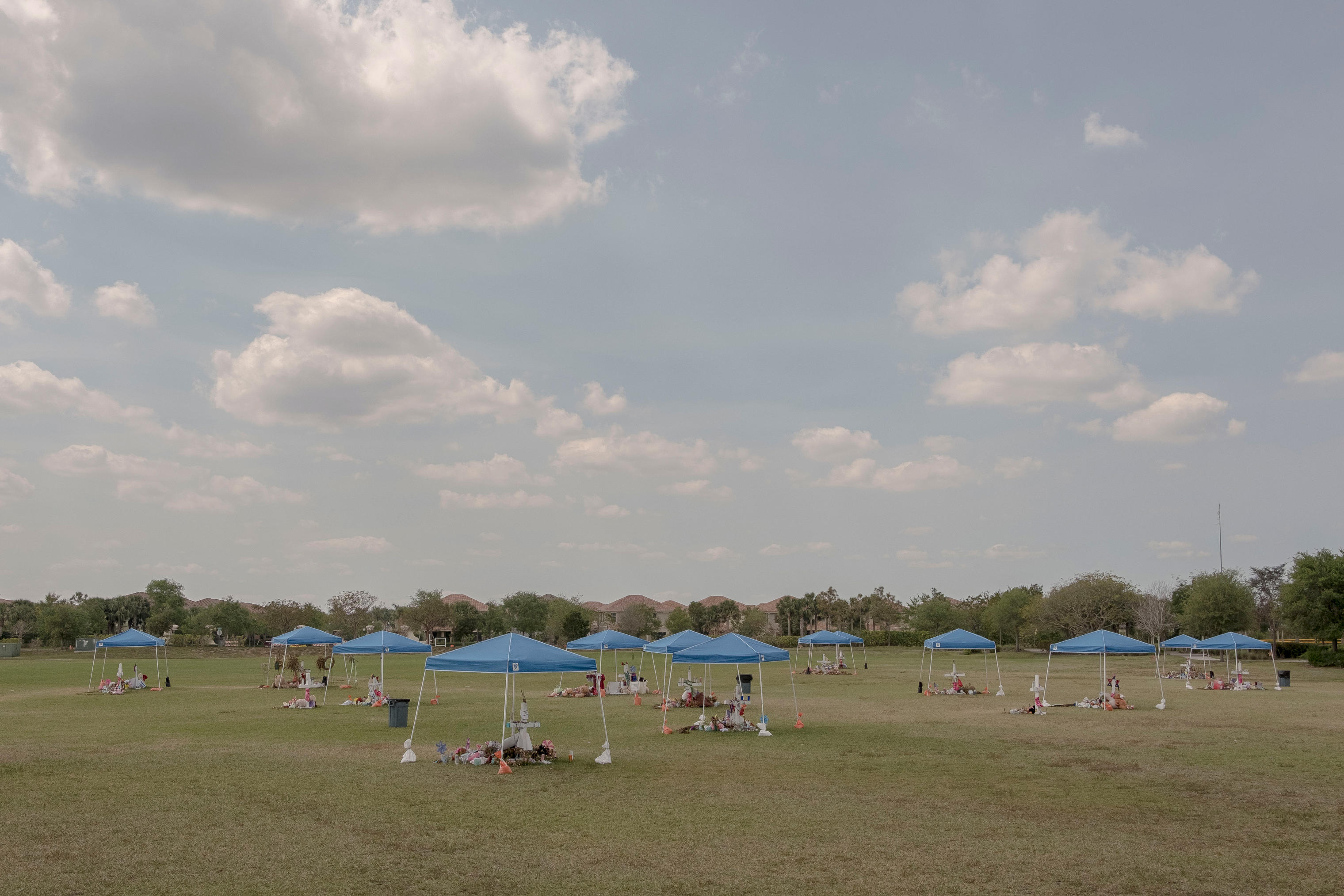
The March for Our Lives almost certainly won’t lead to major gun legislation in Congress this year. But the Parkland teens are taking the long view. To them, this movement is as much about mobilizing young voters as it is about gun violence. The voter-registration group HeadCount plans to dispatch roughly 5,000 volunteers to sign up young voters at U.S. marches. The Parkland kids say their goal is for 4 out of 5 young people to vote in November’s midterm elections. “Either have the politicians pass legislation or set them up to be voted out,” Kasky says. “It’s a win-win.” If only it were that simple. Only 39% of voters between 18 and 20 voted in the 2016 election, according to the Center for Information & Research on Civic Learning and Engagement at Tufts University, and only 14% of voters that age showed up to cast a ballot in the 2014 midterms. Previous turnout drives have not had much success.Not all young people vote Democratic, either. While Trump has a historically low approval rating among millennials (only 6% strongly approve of him, while 46% strongly disapprove), almost a third of millennials lean Republican, according to a Pew survey. Only 49% of 18-to-29-year-olds favored a renewed assault-weapons ban in a 2015 Pew survey, while more than half of respondents of other age groups did support a ban.
They envision a youth political movement that will address many of the other issues affecting the youngest Americans. Hogg says he would like to have a youth demonstration every year on March 24, harnessing the power of teenage anger to demand action on everything from campaign-finance reform to net neutrality to climate change. But even if none of this works—even if they never pass comprehensive gun reform, and net neutrality fails, and Citizens United endures, and climate-change legislation stalls—today’s teenage rebels will become tomorrow’s establishment leaders, informed by the experience that may already be shaping the gun debate.
And that, says Hogg, is the bottom line for politicians who side with the NRA. “You’re gonna be smeared in the textbooks. Your legacy is gone,” he says. “If you don’t stand up with us now, you’ll be standing against us.”
—With reporting by Melissa Chan/New York
- How Donald Trump Won
- The Best Inventions of 2024
- Why Sleep Is the Key to Living Longer
- Robert Zemeckis Just Wants to Move You
- How to Break 8 Toxic Communication Habits
- Nicola Coughlan Bet on Herself—And Won
- Why Vinegar Is So Good for You
- Meet TIME's Newest Class of Next Generation Leaders
